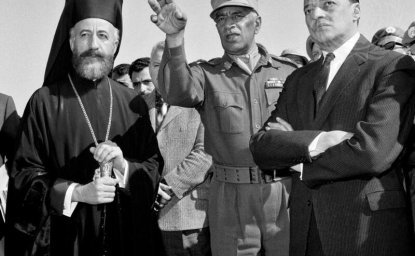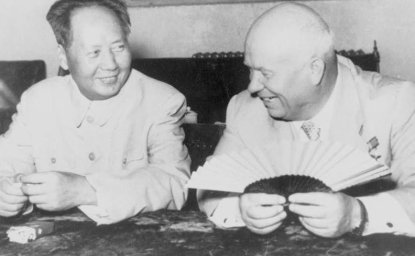Excerpted from the flyer on the film
Berlin, November 9th, 1989: Thousands of people break through the border checkpoints of the divided city. The "death strip" has lost its horror. East and West Berliners are dancing on top of the Wall and chip it away with hammers and chisels all through the night. The most famous symbol of the Cold War is crumbling -- and the world is watching live on television.
It was a party on very explosive ground. Behind the scenes, at all levels of power, frantic diplomatic and military action was taking place. The East German government and its Ministries for National Defense and for State Security, the headquarters of the Soviet forces in East Germany, the Allied forces in West Berlin, and the governments in Moscow, London, Paris, Washington as well as in Bonn -- all were caught by surprise by the events that had unfolded that day.
In the early evening, a press conference of the communist party leadership is coming to an end. Most Western journalists are bored -- as usual. Politburo member Guenter Schabowski comes to his final topic. He announces that the Politburo has decided on a new travel regulation. Permanent emigration and temporary -- so-called "private" -- travel abroad may take place at all border crossings from East to West Germany -- with visas. "When will that take effect?" somebody asks. Schabowski's answer: "Immediately -- without delay." Suddenly the press corps is electrified. What does this mean? What will happen to the Berlin Wall now?
Most people who see the press conference on television don't at first believe what they have heard. But then wire services, television and radio news programs report Schabowski's muddled information as "opening the border." Soon the first East Berliners come to the border checkpoints and demand to trespass.
The border guards have no orders and don't know how to react. As more and more people arrive, the pressure on the heavily guarded border becomes so intense that at the checkpoint Bornholmer Street, the officer in charge -- still without guidance from his superiors -- is faced with the choice either to order his men to shoot or to open the barriers. The officer makes a historic decision, and within moments people from East and West are celebrating together freely after 28 years of separation. During the night checkpoint after checkpoint is opened and Berlin is united in a gigantic party.
But for 50 hours the whole situation was fragile and dangerous. As it turned out, the announcement of free travel at that time was a huge misunderstanding within the Politburo and the East German government -- and they all were now trying to turn back the clock. While thousands danced on the Wall and in the streets, East German armed forces were put on alert, ready to be sent to close the Wall again.
What if they were ordered to march to Berlin and shoot? How would the Soviet Union and the United States react?
The film shows what really happened in those days -- on all levels. General Secretary Mikhail Gorbachev and President George Bush, representatives of the French and the British government, West German Chancellor Helmut Kohl and East German General Secretary Egon Krenz, foreign secretaries (James A. Baker and Eduard Shevardnadze), ministers and high-ranking officers from both sides (some speaking out for the first time), and journalists such as NBC anchorman Tom Brokaw tell us what happened behind the scenes. This unfolding political drama is counterbalanced by the happiness in the streets, the experiences of ordinary Berliners -- from East and West -- showing many moving incidents, amusing details and funny episodes, all of which formed those 50 hours that changed the world.

Cold War International History Project
The Cold War International History Project supports the full and prompt release of historical materials by governments on all sides of the Cold War. Read more




